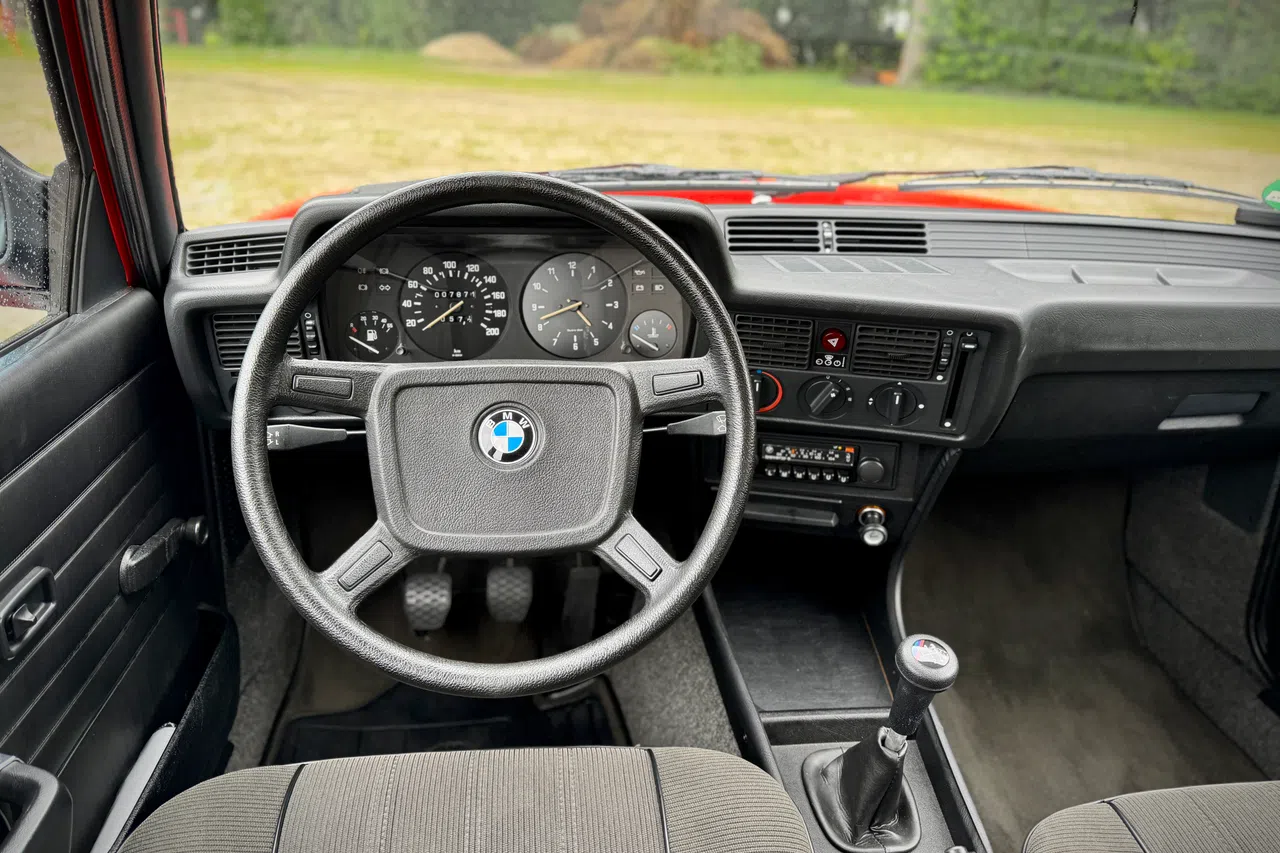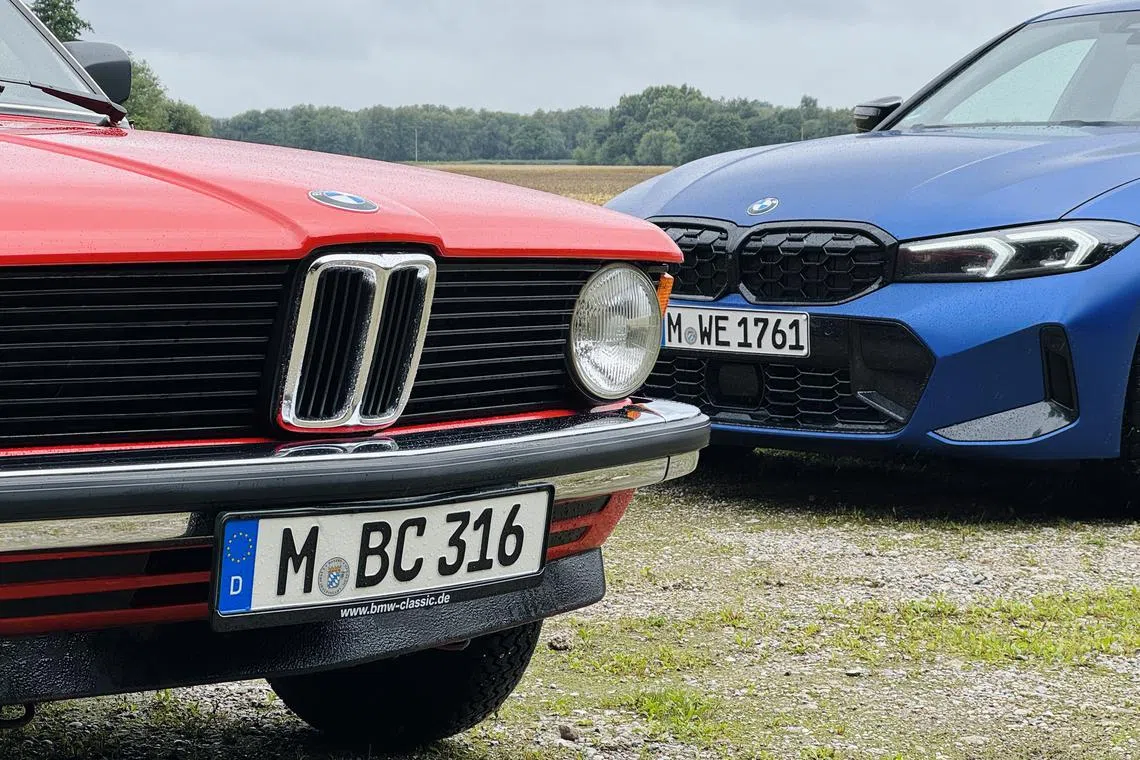What driving a 45 year-old 3 Series taught me about BMW
What happens when you pit a pristine, original BMW 316 against its 2025 descendant, the M340i xDrive?
[MUNICH] Between safari suits, lambchop sideburns and disco, the 1970s had a lot to answer for. Then again, the decade also gave us the BMW 3 Series, a car that set the template for the sort of compact, fun-to-drive and slightly posh saloon that we’ve all aspired to own at least once in our lives.
Specifically, the first 3 Series, code-named E21 in BMW-speak, arrived in 1975. Climbing aboard one lets you know just how much the world has changed in half a century, not just in terms of technology but in social attitudes – it had three ashtrays inside but only two windows that opened.
That thought and more ran through my mind when I drove two cars effectively separated by 50 years. One was a BMW 316, built in 1980 but still showroom-fresh. The other was the latest 3 Series, in full steroidal M340i xDrive form. Both wear the same badge, yet the technology gap between them means they might as well be from different planets.
The model has gone upmarket, too. In 1975, you could buy a shiny new 316 for 13,600 Deutsche Marks (roughly 24,600 euros, adjusted for inflation). Today the cheapest 3 Series retails for 37,599 euros (S$55,906) in Germany.
Small premium saloons are commonplace now, but that’s mainly because the E21 and its successors were such game-changers that they spawned a long list of would-be usurpers, including cars like the Audi A4, Mercedes C-Class, Lexus IS and Jaguar XE. No rival has ever outsold it, but apart from topping sales charts, the 3 Series is probably the one car you would picture if BMW ever made a Tinder profile to woo people who enjoy driving.
Yet, to truly appreciate the impact that the little saloon had on the carmaker’s fortunes, it’s worth remembering that the brand didn’t always rule the premium car market. In fact, in the 1950s BMW was broke and desperate, with little to offer buyers apart from the tiny, low-margin Isetta bubble car, and expensive saloons, nicknamed “baroque angels” for their voluptuous styling, that few people actually bought.
The company threw everything into filling the gap in 1962 with the 1500, a rakish saloon that kicked off BMW’s “Neue Klasse” (or “new class”) of sporty executive cars. A runaway hit, it refilled the company’s coffers and began the brand’s reinvention, paving the way for the first 5 Series (the car that started the model name system that BMW still uses today) and then the E21, which helped spread BMW’s growing reputation for athleticism.
In fact, with its shark nose, clamshell bonnet and clean lines, the 316 is instantly recognisable as a BMW, even after half a century. Inside, it oozes logic and simplicity. It’s easy to read the large instruments through the slender steering wheel. The controls are grouped together in a sensible way, and sit on a dashboard tilted towards the driver for the first time in BMW history, to put everything within easy reach.

In comparison, the M340i, with its bright wide screens littered with digital icons and numbers everywhere, is positively bewildering. Jumping into the modern car from the 316 feels like going from a rotary phone to a Samsung Galaxy.
And while the newest 3 Series downplays its climate system, blowing air through slender slots that are barely visible, I counted seven air-con vents in the E21, presumably needed to stop the driver from veering off the road in a fog of cigarette smoke.
Yet, the gulf that separates both cars yawns widest when you drive them. A silky, 3-litre turbocharged engine makes the M340i feel like a rocket ship compared to its ancestor. Despite being a roomy five-seater, it accelerates much more rapidly than anything Porsche, Ferrari or Lamborghini put out during the E21’s time. And it isn’t even the fastest version of the 3 Series money can buy.
In contrast, the 316 feels calm and unhurried. Its carburettor-fed engine sends just 90 horsepower to the rear wheels through a four-speed manual gearbox. But thanks to the E21’s compact size (and the flimsiness that came with laxer collision standards) the engine only has to move roughly a tonne, a little more than half what the M340i weighs. That being the case, it picks up speed surprisingly eagerly, though it would never set anyone’s hair on fire.
Instead, the pleasure of driving the 316 comes from how precise its controls feel. The clutch is light and its biting point is blissfully easy to judge, the engine revs cheerfully with each throttle blip, and the gear lever slides into place with a fluidity that my own joints certainly didn’t have when I was 45.
That sense of precision extends to the way the car steers, too. The immaculate 316 I drove came from BMW Group Classic, the division tasked with maintaining 1,400 vehicles to literally keep the brand’s legacy going, and I wasn’t about to take liberties with a museum piece on a rainy day, but even so, I was amazed by how taut it felt.

Despite a lack of power steering (and general lack of power in my arms), I found the 316 a pleasure to guide through wet, twisty roads, and couldn’t have felt more in touch with the tarmac if I’d been on a bicycle. The wide tyres and electric power steering of today’s cars add so much numbness in comparison, it’s like driving with both arms shot full of Novocaine.
Of course, just about any small car that weighs only a tonne is bound to feel agile, so the E21’s appeal in 1975 probably came from how it could engage the driver with crisp controls and sensible ergonomics.
I found the 316 surprisingly solid, too. Things only get loud once you get up to 100 kmh, which is where the optional five-speed gearbox would have been worth paying for, but the car is otherwise refined and rattle-free.
That said, the M340i operates on a different level of refinement altogether. Its engine snarls when you gun it, but it never feels intrusive because it sounds as cultured as it does fierce, and the cabin is otherwise superbly insulated. The suspension, though firm, keeps the body calm and settled even at a blistering pace. Sitting at 200 kmh on the Autobahn felt like travelling at half that speed.
That makes the current 3 Series lovely to live with, but it does count against it in some ways. For one thing, you have to be going too fast for public roads to even feel like you’re testing the car’s grip and poise. And while it’s far roomier than the E21 inside, the M340i is actually wider than the very first 7 Series, making it feel bulky on narrower roads.
Objectively, the M340i is the better car in every measurable way. It’s faster, quieter, safer and vastly more capable, so much so that it’s barely recognisable as a descendant of the E21. Yet, reaching 50 years into the past to discover the pleasure of driving the 316 helped me understand where BMW gained the clarity to be BMW. Safari suits and smoking may have gone out of style, but the 3 Series has never stopped being cool.
BMW 316 (1975)
Engine 1,998 cc, eight-valve in-line four Power 90 hp at 6,000 rpm Torque 123 Nm at 4,000 rpm Gearbox Four-speed manual 0-100 kmh 12.5 seconds (estimated) Top speed 161 kmh Fuel efficiency 8.3 L/100 km (estimated) Price when new DM13,600 (about S$11,800)
BMW M340i xDrive
Engine 2,998 cc, turbocharged in-line six Power 374 hp at 5,200 rpm Torque 500 Nm at 1,850 rpm Gearbox 8-speed automatic 0-100 kmh 4.4 seconds Top speed 250 kmh (limited) Fuel efficiency 8.8 L/100 km Agent Eurokars BMW or Performance Motors Price S$450,888 with Certificate of Entitlement Available Now
Decoding Asia newsletter: your guide to navigating Asia in a new global order. Sign up here to get Decoding Asia newsletter. Delivered to your inbox. Free.
Copyright SPH Media. All rights reserved.


